 Technology
Technology  Technology
Technology  Humans
Humans 10 Everyday Human Behaviors That Are Actually Survival Instincts
 Animals
Animals 10 Animals That Humiliated and Harmed Historical Leaders
 History
History 10 Most Influential Protests in Modern History
 Creepy
Creepy 10 More Representations of Death from Myth, Legend, and Folktale
 Technology
Technology 10 Scientific Breakthroughs of 2025 That’ll Change Everything
 Our World
Our World 10 Ways Icelandic Culture Makes Other Countries Look Boring
 Misconceptions
Misconceptions 10 Common Misconceptions About the Victorian Era
 Mysteries
Mysteries 10 Strange Unexplained Mysteries of 2025
 Miscellaneous
Miscellaneous 10 of History’s Most Bell-Ringing Finishing Moves
 Technology
Technology Top 10 Everyday Tech Buzzwords That Hide a Darker Past
 Humans
Humans 10 Everyday Human Behaviors That Are Actually Survival Instincts
 Animals
Animals 10 Animals That Humiliated and Harmed Historical Leaders
Who's Behind Listverse?

Jamie Frater
Head Editor
Jamie founded Listverse due to an insatiable desire to share fascinating, obscure, and bizarre facts. He has been a guest speaker on numerous national radio and television stations and is a five time published author.
More About Us History
History 10 Most Influential Protests in Modern History
 Creepy
Creepy 10 More Representations of Death from Myth, Legend, and Folktale
 Technology
Technology 10 Scientific Breakthroughs of 2025 That’ll Change Everything
 Our World
Our World 10 Ways Icelandic Culture Makes Other Countries Look Boring
 Misconceptions
Misconceptions 10 Common Misconceptions About the Victorian Era
 Mysteries
Mysteries 10 Strange Unexplained Mysteries of 2025
 Miscellaneous
Miscellaneous 10 of History’s Most Bell-Ringing Finishing Moves
10 Dark Secrets Of The Ottoman Empire
For almost 400 years, the Ottoman Empire dominated Southeastern Europe, Turkey, and the Middle East. Founded by daring Turkic horsemen, the empire soon lost much of its original vitality, settling into a curious state of functional dysfunction that hid all kinds of dark secrets.
10Fratricide
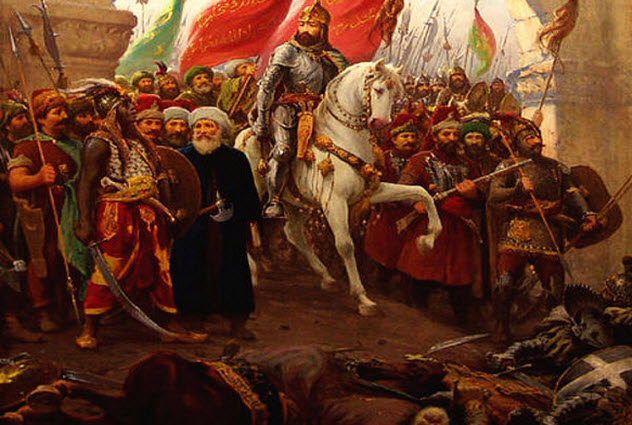
The early Ottoman sultans didn’t practice primogeniture, where the eldest son inherits everything. As a result, various brothers sometimes claimed the throne and the early days of the empire were plagued by pretenders, who tended to take refuge in enemy states and cause trouble for years. When Mehmed the Conqueror besieged Constantinople, his own uncle fought against him from the walls.
Mehmed dealt with the problem with his customary ruthlessness. When he took the throne, he had most of his male relatives executed, including an infant brother strangled in his crib. Later, he issued his infamous law: “And to whomsoever of my sons the Sultanate shall pass, it is fitting that for the order of the world he shall kill his brothers. Most of the Ulema allow this. So let them act on this.”
From that point on, each new sultan had to take the throne by killing all his male relatives. Mehmed III tore out his beard with grief when his young brother begged him for mercy. But he “answered never a word,” and the boy was executed along with 18 other brothers. The sight of their 19 shrouded bodies rolling through the streets was said to have moved all Istanbul to tears.
Even after the initial round of murders, the sultan’s relatives weren’t safe. Suleiman the Magnificent watched silently from behind a screen while his own son was strangled with a bowstring; the boy had become too popular with the army for the sultan to feel secure.
9The Cage
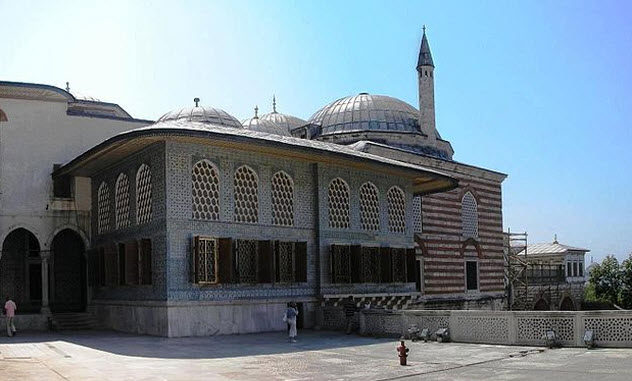
The policy of fratricide was never popular with the public or the clergy, and it was quietly abandoned when Ahmed I suddenly died in 1617. Instead, potential heirs to the throne were confined in the Topkapi Palace in Istanbul in special apartments known as the kafes (“the cage”).
A prince of the Ottoman Empire might spend his whole life imprisoned in the kafes, monitored constantly by guards. The imprisonment was usually luxurious but strictly enforced, and many a prince went mad from boredom or else became debauched and dependent on alcohol. When a new sultan was taken to the Gate of Felicity to receive the allegiance of the viziers, it might be the first time he had been outside in decades, which wasn’t ideal preparation for a ruler.
The threat of execution was constant. In 1621, the Grand Mufti refused to allow Osman II to have his brother strangled. But the chief judge of the Balkans was rushed in to give a counter opinion, and the prince was strangled anyway. Osman himself was later overthrown by the military, who had to extricate his surviving brother from the kafes by pulling the roof off and hauling him out with a rope. The poor man had been two days without food or water and was probably too insane to notice that he had become sultan.
8The Palace Was A Silent Hell
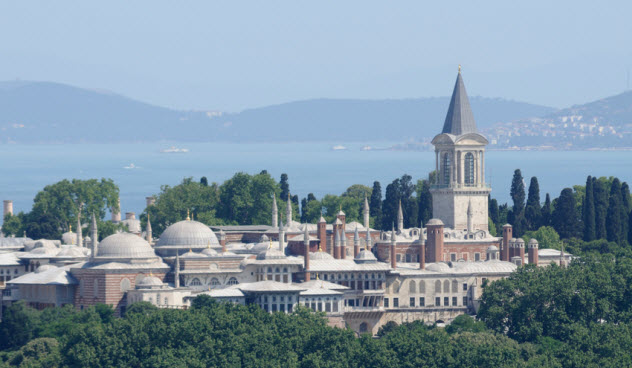
Even for the sultan, life in the Topkapi could be stifling in the extreme. It was considered unseemly for the sultan to speak too much, so a form of sign language was introduced and the ruler spent most of his day surrounded by complete silence. Mustafa I found this impossible to bear and tried to have it banned, but his viziers refused to allow it. Mustafa soon went insane and was seen throwing coins into the sea for the fish to spend.
Palace intrigue was endemic as viziers, courtiers, and eunuchs jockeyed for power. For 130 years, the women of the harem gained great influence and the period became known as “the sultanate of women.” The dragoman (chief interpreter) was always powerful and always a Greek. The eunuchs split along racial lines, and the Chief Black Eunuch and Chief White Eunuch were often fierce rivals.
Caught in the middle of this madness, the sultan was watched everywhere he went. Ahmet III wrote to his grand vizier complaining that “If I go to one of the rooms, 40 pages are lined up; if I have to put on my trousers, I do not feel the least comfort, so the sword-bearer has to dismiss them, keeping only three or four men so that I may be at ease.” Spending their days in total silence, constantly watched, in such a poisonous atmosphere, a number of the later Ottoman sultans became mentally ill.
7Executions
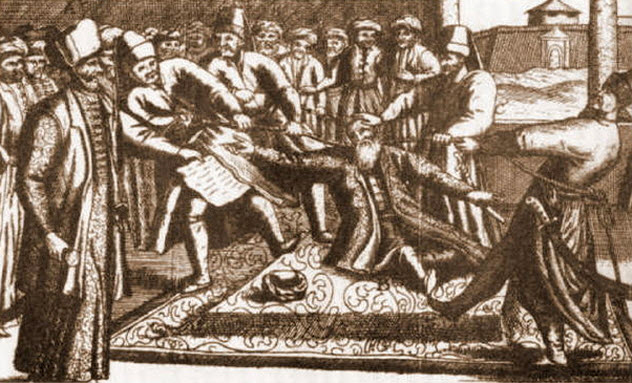
The Ottoman government held the power of life and death over its subjects, and it wasn’t afraid to use it. The first court of the Topkapi Palace, where petitioners and visitors had to gather, was a terrifying place. It featured two pillars where severed heads were displayed and a special fountain solely for executioners to wash their hands. During the periodic palace purges, mounds of tongues might be piled up in the first court while a special cannon boomed every time a body was thrown into the sea.
The Ottomans didn’t bother to create a corps of executioners. Instead, the job strangely fell to the palace gardeners, who split their time between murder and creating many of the delightful flowers we know today. Most of their victims were simply beheaded. But it was forbidden to spill the blood of royalty and high-ranking officials, so they had to be strangled instead. As a result, the head gardener was always a huge, muscular man capable of choking a vizier to death at a moment’s notice.
In the early days of the empire, the sultan’s officials prided themselves on their obedience to his whims and it was customary for them to face execution with quiet grace. The famous vizier Kara Mustafa was much respected for greeting his executioner with a humble “So be it” and kneeling for the cord to loop around his neck.
In later years, standards slipped. In fact, the 19th-century governor Ali Pasha fought so hard against the sultan’s men that he had to be shot dead through the floorboards of his house.
6The Death Race
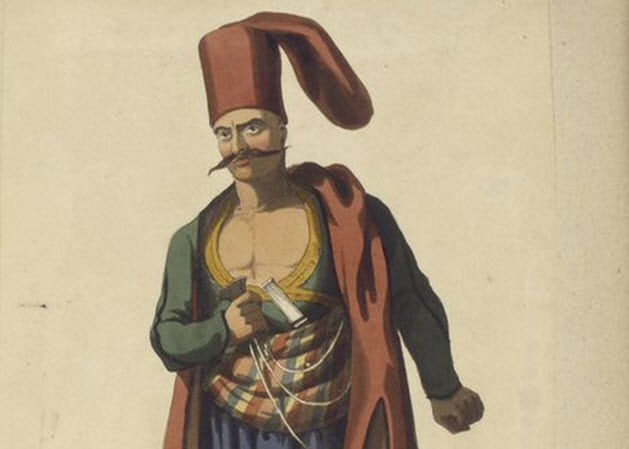
But there was one way for a loyal official to escape the sultan’s wrath. Beginning in the late 18th century, it became the custom that a condemned grand vizier could escape his fate by beating the head gardener in a race through the palace gardens.
The official would be summoned to a meeting with the head gardener and after exchanging greetings, the vizier would be handed a cup of iced sherbet. If it was white, the sultan had granted him a reprieve. If it was red, he was to be executed. As soon as he saw the red sherbet, the vizier would start sprinting.
The vizier would sprint through the palace gardens, darting between shady cypress trees and rows of tulips, presumably watched by hidden eyes behind grated harem windows. The goal was the Fish Market Gate on the other side of the palace. If the vizier reached the gate before the head gardener, he would merely be exiled. But the head gardener was younger and stronger, and he would usually be waiting with his silk cord.
Still, a few viziers did make it, including Haci Salih Pasha, the last vizier to face a death race. He was widely congratulated and later became a provincial governor.
5The Mob
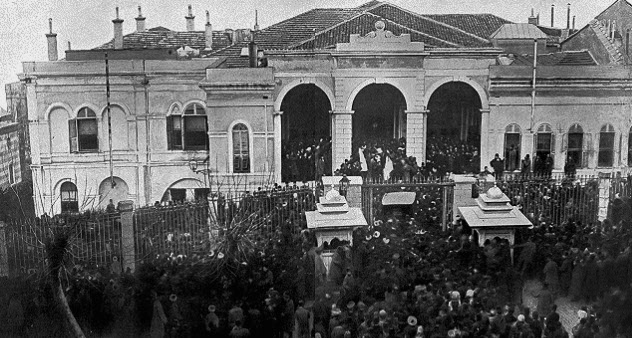
Despite being theoretically second only to the sultan, grand viziers tended to be executed or thrown to the mob as a scapegoat whenever anything went wrong. Selim the Grim went through so many grand viziers that they began carrying a will with them at all times. One begged Selim to let him know in advance if he was to be executed, only for the sultan to cheerfully respond that he was already lining up a replacement.
The viziers also had to placate the people of Istanbul, who were prone to marching on the palace and demanding executions whenever anything went wrong. An 18th-century British visitor observed that “when a minister here displeases the people, in three hours time he is dragged even from his master’s arms [and] they cut off his hands, head, and feet.”
Not that the people were afraid to storm the palace if their demands weren’t met. In 1730, a ragged soldier named Patrona Ali led a mob into the palace and effectively took control of the empire for several months. He was stabbed to death after trying to make a butcher who had lent him money ruler of Wallachia.
4The Harem
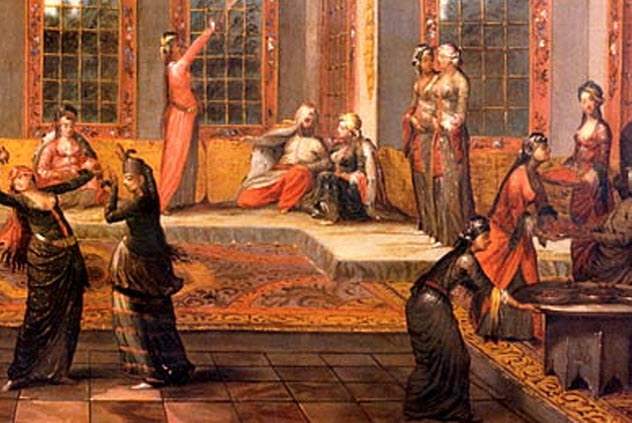
Perhaps the most terrifying feature of the Topkapi palace was the Imperial Harem. This consisted of up to 2,000 women, most of them bought or abducted as slaves, who served as the sultan’s wives and concubines. They were kept cloistered deep in the seraglio, and for a man to look upon them meant instant death. The harem itself was guarded and managed by the Chief Black Eunuch, who eventually leveraged the position into one of the most powerful offices in the empire.
Conditions in the harem itself presumably varied, although little information is available about events within its walls. It was said that there were so many concubines that some might barely set eyes on the sultan. Others managed to gain influence over the running of the empire. Suleiman the Magnificent fell madly in love with a Pole called Roxelana, married her, and made her a key adviser.
Roxelana’s influence was such that a grand vizier sent the pirate Barbarossa on a desperate mission to kidnap the Italian beauty Giulia Gonzaga in the belief that she alone would be a match for Roxelana’s charms. The plan was foiled by a brave Italian, who burst into Giulia’s bedroom and got her onto a horse just before the pirates arrived. After thanking the man profusely for saving her, Giulia supposedly had him stabbed to death for seeing her in her nightgown, a deed which won her the admiration of all Italy.
Kosem Sultan achieved even more influence than Roxelana, effectively running the empire as regent for her son and grandson. But she met her match in her daughter-in-law Turhan, who had Kosem chased down and strangled with a curtain before taking her place as regent.
3The Boy Tribute
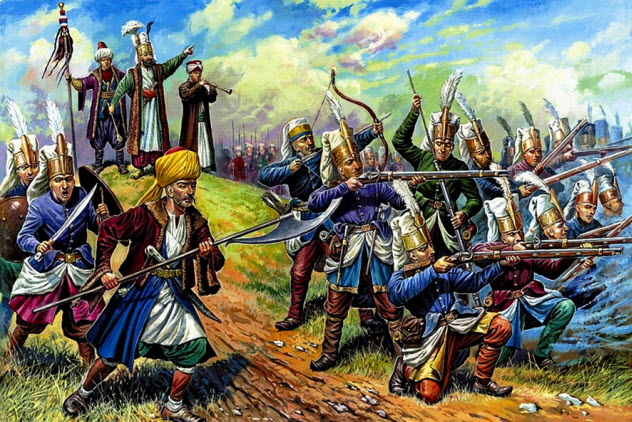
One of the most notorious features of early Ottoman rule was the devsirme (“collection”), a tribute of young boys from the empire’s Christian subjects. Most of the boys were enrolled in the Janissary Corps, the army of slave-soldiers who were at the forefront of the Ottoman conquests. The tribute was carried out irregularly whenever the empire felt it might need the manpower and usually targeted boys aged 12–14 from Greece and the Balkans.
Ottoman officials would summon all the boys in the village and check their names against the baptismal records from the local church. They would then select the strongest, perhaps taking one boy from every 40 households. The boys would then be grouped together and marched to Istanbul, with the weakest dropping dead along the way. The Ottomans produced a detailed description of each boy so that they could be tracked down if they escaped.
In Istanbul, the boys were circumcised and forcibly converted to Islam. The most handsome or intelligent were sent to the palace, where they were trained to join the imperial elite. These boys could aspire to reach the very highest ranks, and many became pashas or viziers, like the famed Croatian grand vizier Sokollu Mehmed.
The rest of the boys joined the Janissaries. First, they were sent to work on a farm for eight years, where they learned Turkish and gained strength. In their twenties, they formally became Janissaries, the elite soldiers of the empire who were subject to iron discipline and indoctrination.
There were exceptions to the tribute. It was forbidden to take a family’s only child or the children of men who had served in the military. Orphans were off-limits for some reason as were the untrustworthy Hungarians. The citizens of Istanbul were also excluded on the grounds that they “did not have a sense of shame.” The tribute system died out in the early 18th century when the children of Janissaries were allowed to become Janissaries and the corps became self-sustaining.
2Slavery
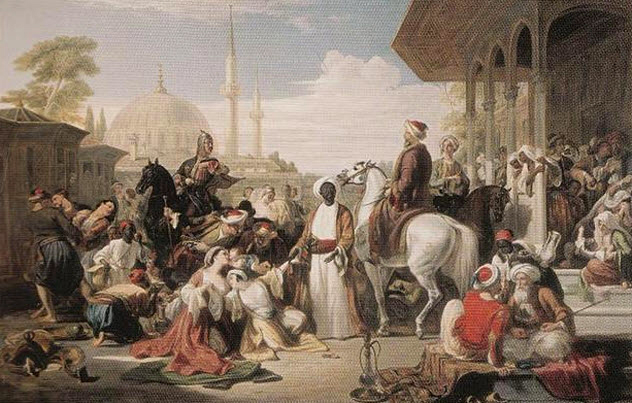
Although the devsirme had died out by the 17th century, slavery remained a key feature of the Ottoman system until the end of the 19th century. As time went on, most slaves came from Africa or from the Caucasus (Circassians were particularly prized), while the Crimean Tartar raiders provided a steady flow of Russians, Ukrainians, and even Poles. Muslims couldn’t be legally enslaved, but that rule was quietly forgotten whenever supplies of non-Muslims dried up.
In his classic Race And Slavery In The Middle East, the scholar Bernard Lewis argued that Islamic slavery developed largely independently of Western slavery and therefore had a number of key differences. For example, it was somewhat easier for Ottoman slaves to gain their freedom or attain positions of power. Ottoman apologists also like to claim that it was less racist, treating white and black slaves alike, a claim that is somewhat undercut by the writings of the actual black people who lived under Ottoman rule.
But there is no question that Ottoman slavery was an incredibly brutal system. Millions of people died in slave raids or were worked to death in the fields. That’s not even getting into the castration process used to create eunuchs. As Lewis pointed out, the Ottomans imported millions of slaves from Africa but very few people of African descent remain in modern Turkey today. That alone tells a story.
1Massacres
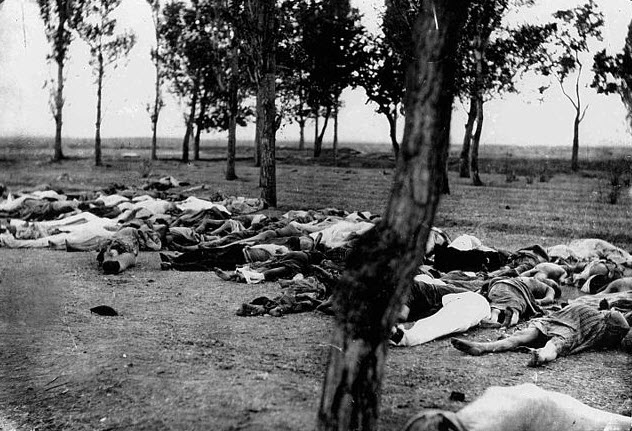
On the whole, the Ottomans were a rather tolerant empire. Aside from the devsirme, they made no real attempt to convert their non-Muslim subjects and welcomed the Jews with open arms after they were expelled from Spain. They never discriminated against their subject peoples, and the empire was practically run by Albanians and Greeks. But when the Ottomans themselves felt threatened, they could turn very ugly.
Selim the Grim, for example, was very alarmed by the Shia, who denied his authority as defender of Islam and could be double agents for Persia. As a result, he marched across the east of the empire, slaughtering at least 40,000 Shia and driving countless more from their homes. When the Greeks first began to press for independence, the Ottomans turned matters over to their Albanian irregulars, who cheerfully committed a number of terrible massacres.
As the empire declined, it lost much of its old tolerance, growing more and more vicious toward its minorities. By the 19th century, massacres were growing increasingly common. This famously reached its terrifying climax in 1915 when the empire, just two years from collapse, orchestrated the massacre of as much as 75 percent of its Armenian population. Some 1.5 million people died in the Armenian Genocide, an atrocity that Turkey still refuses to fully acknowledge.








